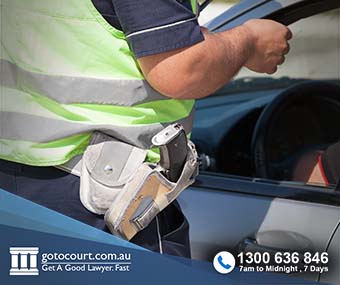Heavy Vehicle Traffic Offences in New South Wales
The Heavy Vehicle National Law 2013 (HVNL) came into effect in New South Wales in 2014. Before that, each State and Territory had their own laws regarding heavy vehicles. The HVNL now applies in most states. It is overseen by the National Heavy Vehicle Regulator. The law applies not only to drivers, but to all parties involved in the road transport supply chain. Each person in the chain is responsible for preventing breaches of the laws. In addition, corporations, directors, partners and managers can be held accountable for the actions of the people under their control. This is the chain of responsibility (COR). Offences alleged to have been committed by persons in the chain are subject to the reasonable steps defence.

Driver fatigue laws
The driver fatigue laws apply to any fatigue-regulated heavy vehicle. This means a motor vehicle, or combination of vehicles, or certain buses with a GVM of more than 8 tonnes and with 3 or more axles, although there are some exceptions. The driver fatigue rules fall within the chain of responsibility regime. This means that people other than the driver can be charged with an offence. It is an offence to drive a fatigue-regulated heavy vehicle when a driver’s ability to drive safely was affected by fatigue. Every person in the chain of responsibility has to take all reasonable steps to ensure that a person does not drive a fatigue-regulated heavy vehicle while affected by fatigue. The specific obligations vary depending on the person’s role in the chain.
Rest & Work hour offences
The maximum penalty for work and rest hour offences are determined by the risk category of the offence. There are 4 categories – minor, substantial, major and critical. These offences carry substantial fines. Major risk and critical risk breaches also carry demerit points. The risk categories are based on how many minutes a person worked outside of their allowable work hours or allowable rest hours. As a driver, defences include showing that you had taken sufficient breaks, that you did not appear to be fatigued, or that your manner of driving could have another explanation. A person who is in the chain of responsibility who is charged with a work or rest hour’s offence may be able to rely on the reasonable steps defence.
Overload offences
The penalty given depends on how much the load is over the allowable weight, whether the person is an individual or body corporate, and if the offence is a first or subsequent offence.
- A minor risk breach is up to 5% over the allowable weight.
- A substantial risk breach is between 5% and 20% over the allowable weight.
- A severe risk breach is more than 20% over the allowable weight. Severe risk offences are calculated on the overloaded amount, and the penalty increases with every percent that the overload exceeds 20% of the allowable weight
If a mass overload is detected, the RMS can charge any of the people in the chain of responsibility for the offence. These people may be able to rely on the reasonable steps defence.
Speeding
It is an offence for any person to ask the driver of a heavy vehicle to exceed the speed limit. Further, all persons who are responsible for the use of the vehicle must take all reasonable steps to make sure that their activities don’t cause the vehicle’s driver to exceed speed limits, or they may be liable for penalties. This includes;
- Anyone who schedules the activities of a heavy vehicle or its driver.
- Loading managers responsible for loading goods onto and unloading goods from a heavy vehicle.
- Persons who consign goods or who receive the goods.
If a speeding offence is committed by a driver, the driver’s employer, contractor or operator is also taken to have committed an offence. All persons in the chain of responsibility may rely on the reasonable steps defence.
Record keeping
The law requires that records are kept of specific information for drivers of fatigue regulated heavy vehicles. A record keeper may be the employer, accredited operator, or the driver depending on the driver’s employment status. The records must be kept for 3 years and made available for inspection when required.
Penalties
The Regulator provides a table of penalties for offences under the HVNL. Penalties can be imposed by way of;
- Formal warnings – can be given if the person had taken all reasonable steps to prevent a breach of the law and was unaware that the law had been breached. A warning cannot be given for a breach of a mass, dimension or loading requirement that is a substantial risk breach or severe risk breach. A warning may be withdrawn within 21 days and the person can be charged for the offence.
- An infringement notice may be issued for a fine and/or demerit points.
- Court proceedings – the court can impose fines, demerit points, commercial benefits penalty orders, cancel/suspend vehicle registration, impose supervisory intervention orders, impose prohibition orders, make compensation orders.








